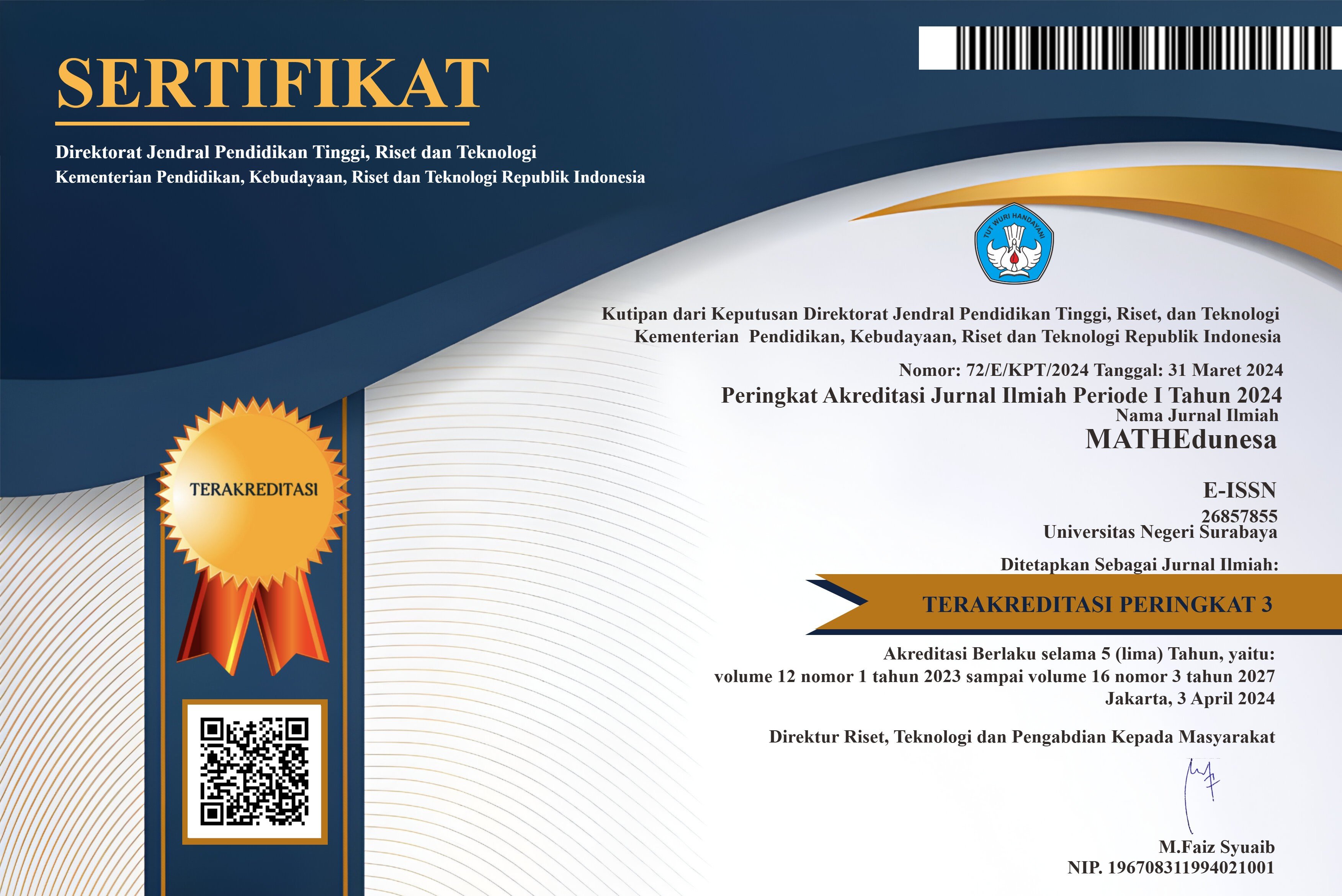Profil Berpikir Kritis Siswa dalam Menyelesaikan Masalah Matematika Kontekstual Ditinjau dari Adversity Quotient
DOI:
https://doi.org/10.26740/mathedunesa.v14n2.p483-496Abstract
This study aims to describe the profile of students' critical thinking in solving contextualised mathematics problems in terms of adversity quotient. This research is descriptive research with a qualitative approach. The research subjects consisted of 3 grade IX students who were selected based on high (Climber), medium (Camper), and low (Quitter) Adversity Quotient (AQ) levels by considering equal mathematics ability (based on End Of Year Summative Assessment Mathematics scores) and the same gender. Data on students' critical thinking profiles in solving contextualised mathematics problems were collected by task-based interviews on contextualised mathematics problems. The data collected from the task-based interviews were then transcribed and reduced which were used for interpretation and inference. The results of this study show that climber students think critically evidenced by interpretation, analysis, evaluation, inference, explanation, and self-regulation at each stage of problem solving, namely the stage of understanding the problem, the stage of developing a solution plan, the stage of implementing the solution plan, and the stage of checking back. Camper students think critically, as evidenced by interpretation, analysis, evaluation, inference, explanation, and self-regulation, but at the stage of preparing a solution plan, they do not explain the reasons for the steps used and do not review their answers, so they doubt the answers stated. Quitter students think critically evidenced by interpretation, analysis, evaluation, inference, explanation, and self-regulation, but do not realise that their work is wrong.
Downloads
Downloads
Published
Issue
Section
 Abstract views: 131
,
Abstract views: 131
, PDF Downloads: 120
PDF Downloads: 120




